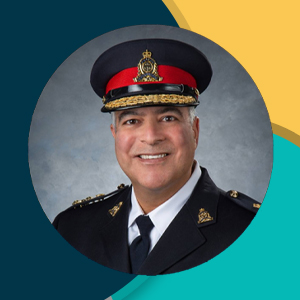
About the author:
About Najme Parsi Pour:
Najme Parsi Pour, author of “Urban Safety Planning,” weaves her academic background in geography and urban planning with a fervent aspiration to enhance urban safety through law enforcement in Canada. Born in Kerman province, Iran, Najme’s pursuit of a safer urban landscape is rooted in a masterful blend of scholarly insight and a practical understanding of urban dynamics. This book bridges the gap between urban planning theories and real-world law enforcement applications, reflecting her journey and dedication to fostering safer communities. Najme’s passion for community safety and her transition into law enforcement highlights her commitment to integrating these critical aspects into North American urban contexts.
Copyright
| Title | Urban Safety Planning |
| Author | Najme Parsi Pour |
| Author’s LinkedIn | najme-parsi-pour |
| Foreword | Shahin Mehdizadeh (Makoy’i tooma), M.O.M. |
| Edit and Cover | Behrad Shojaei Far |
| Research | Zahra Parsi Pour |
| Publisher | Library and Archives Canada / Government of Canada and GLAMPINGO INC. |
| Publication Date | May 1st, 2024 |
| Edition | First Edition |
| Copyright | 2024 GLAMPINGO INC. All rights reserved. [Registration number: 1210711] |
| ISBN (Paperback) | [978-1-7383467-0-7] |
| ISBN (Hardcover) | [978-1-7383467-3-8] |
| ISBN (eBook) | [978-1-7383467-2-1] |
| Dimensions | 15.24 x 1.88 x 22.86 cm |
| Item weight | 558 g |
| Number of the pages | 325 pages |
Chapters 1, 2 and 3
Summary for Chapters 1-3:
Chapters 1 through 3 of “Urban Safety Planning” lay the foundational theories and practices at the intersection of urban planning and law enforcement. Starting with an exploration of urban safety’s historical context and moving through contemporary strategies and principles, these chapters establish the groundwork for understanding how safety can be integrated into urban design. The book examines the roles of urban planners and the impact of thoughtful design in mitigating risks and enhancing the well-being of communities. With a strong focus on Crime Prevention Through Environmental Design (CPTED) and the resilience of urban infrastructure, these sections provide a robust framework for assessing urban environments and tailoring safety strategies to the unique challenges they present.
Chapters 4, 5 and 6
Summary for Chapters 4-6:
Chapters 4 to 6 delve into the practical challenges and dynamic solutions concerning safety in modern urban environments. These chapters address the complexities of urban crime, transportation hazards, and the socioeconomic disparities that influence safety. The narrative progresses from outlining the issues to exploring practical interventions, such as enhancing pedestrian safety, implementing traffic calming measures, and leveraging community engagement for more resilient neighborhoods. These sections underscore the importance of inclusive planning and community-centric approaches, illustrating successful case studies and policy recommendations that show how structured planning and community involvement can lead to safer urban spaces.
Chapters 7, 8 and 9
Summary for Chapters 7-9:
In chapters 7 through 9, the discussion shifts towards the enforcement aspect of urban safety, highlighting modern law enforcement strategies and the integration of technology in policing. The text explores community policing, proactive strategies, and the challenges and opportunities presented by technological advancements such as predictive policing and digital surveillance. These chapters also consider the ethical implications and privacy concerns associated with tech-driven law enforcement, advocating for a balanced approach that respects community rights while enhancing security. The narrative reinforces the importance of diversity, equity, and training within the police force to foster a more effective and community-responsive policing culture.
Chapters 10 and 11
Summary for Chapters 10-11:
The concluding chapters, 10 and 11, envision the future directions of urban safety planning and the specific strategies for implementing these ideas across North America. These chapters synthesize insights from previous discussions and focus on emerging trends, legislative evolutions, and the increasing role of environmental considerations in urban planning. The text advocates for a collaborative approach, involving stakeholders at all levels, to face the challenges of urban safety and harness opportunities for innovation in both policy and practice. The overarching theme is the development of comprehensive safety strategies that are adaptive, equitable, and sustainable, aiming to transform urban areas into safe havens through informed action and cooperative governance.
About Shahin Mehdizadeh, M.O.M.
Chief of Police, Lethbridge Police Service and former Chief Superintendent and District commander of the RCMP, Canada.
Chief Shahin Mehdizadeh, currently the Chief of Police for Lethbridge Police Service, Alberta, has over 35 years of comprehensive law enforcement experience. His career spans various crucial domains, including Major Crimes, National Security, and community engagement. Chief Mehdizadeh has previously served in significant roles within the RCMP, including as Chief Superintendent and District Commander for Central Alberta, where he led the operations of 24 police detachments and managed a vast workforce. His contributions to “Urban Safety Planning” through his foreword have significantly elevated the book’s reach and resonance, especially among Canadian audiences. His leadership and commitment to enhancing public safety through community collaboration and modern policing practices have left a lasting impact, making his endorsement a powerful advocate for the book’s message.
Contact:
- Shahin Mehdizadeh (Makoy’i tooma), M.O.M.
- Lethbridge Police Service
- 135 1 Ave S, Lethbridge, AB T1J 0A1







